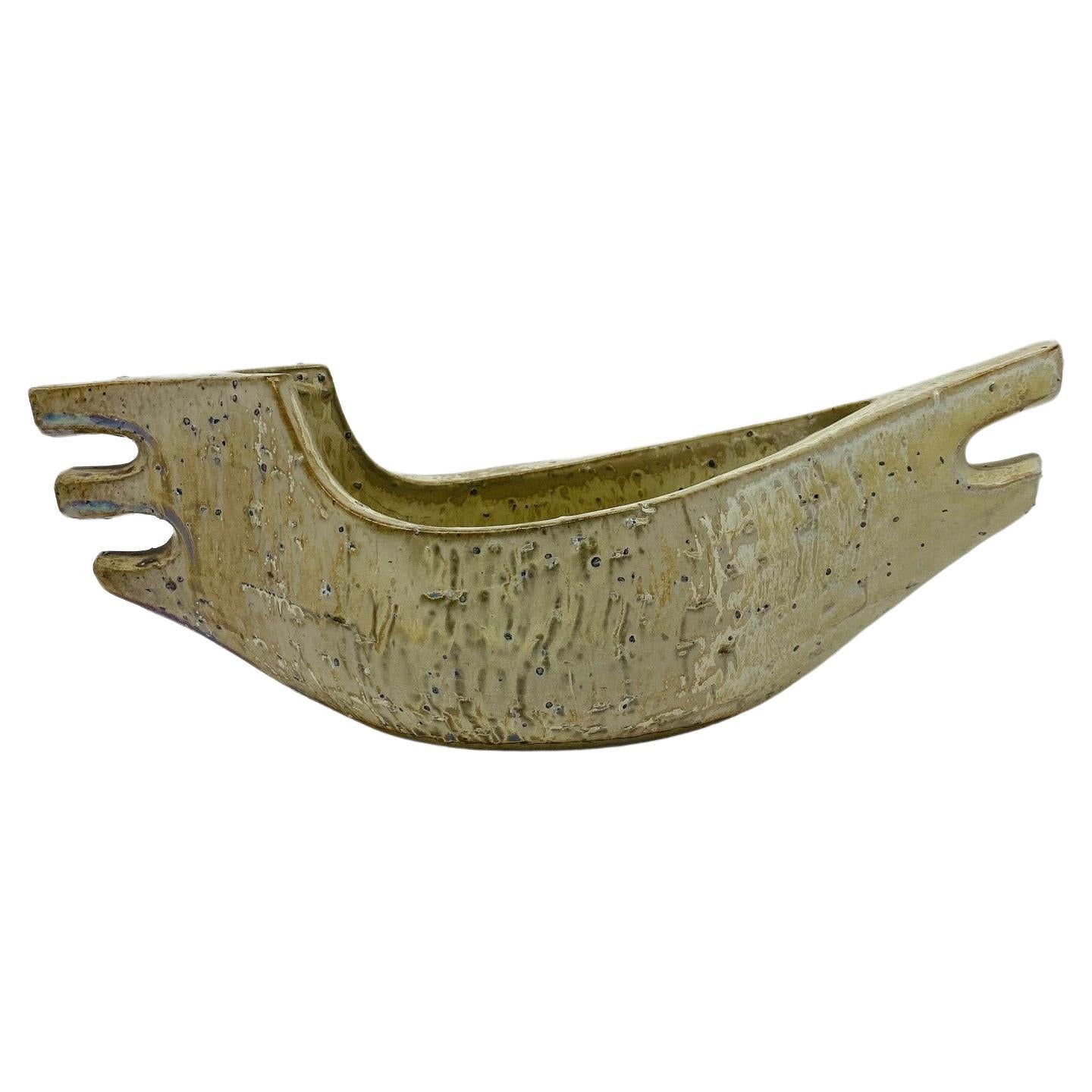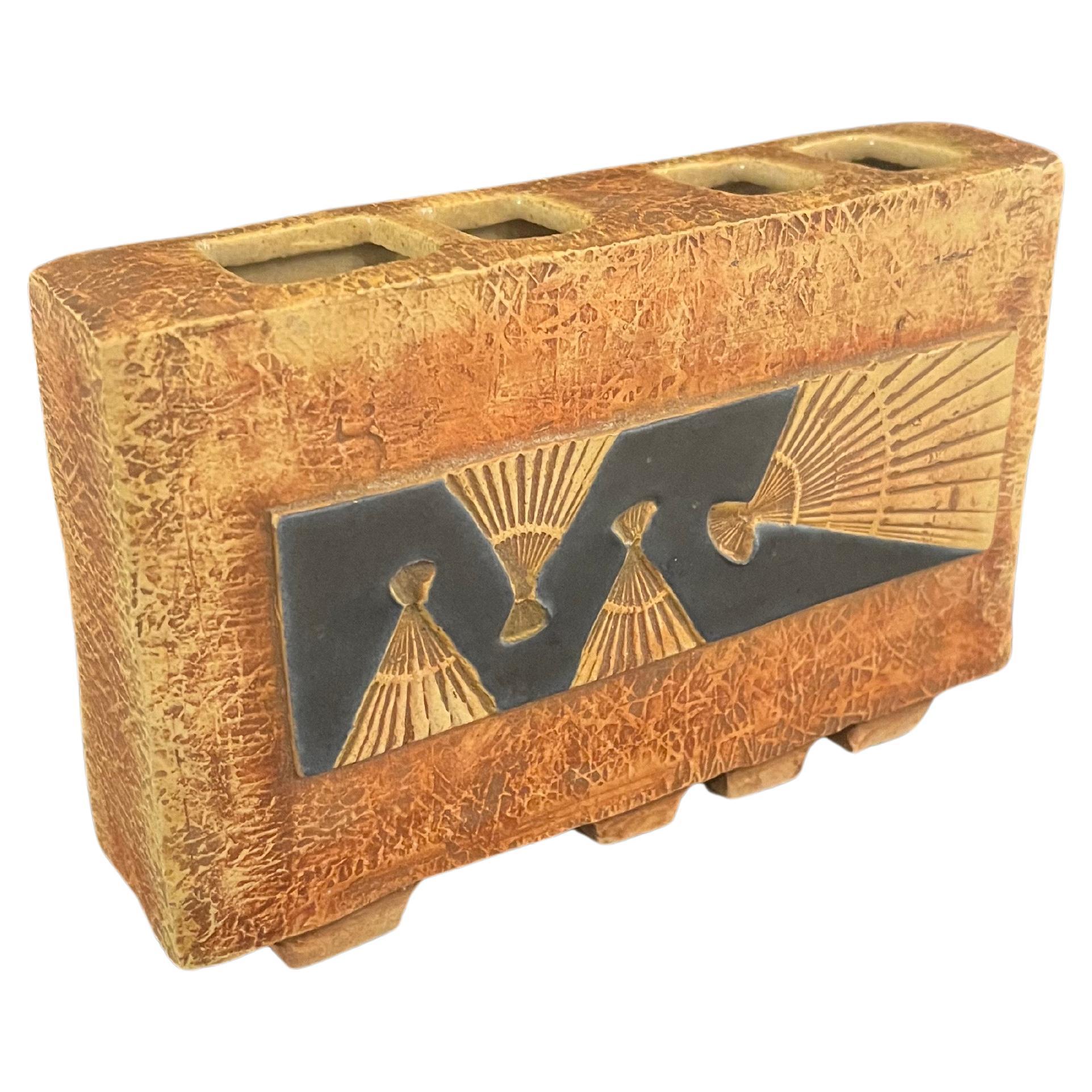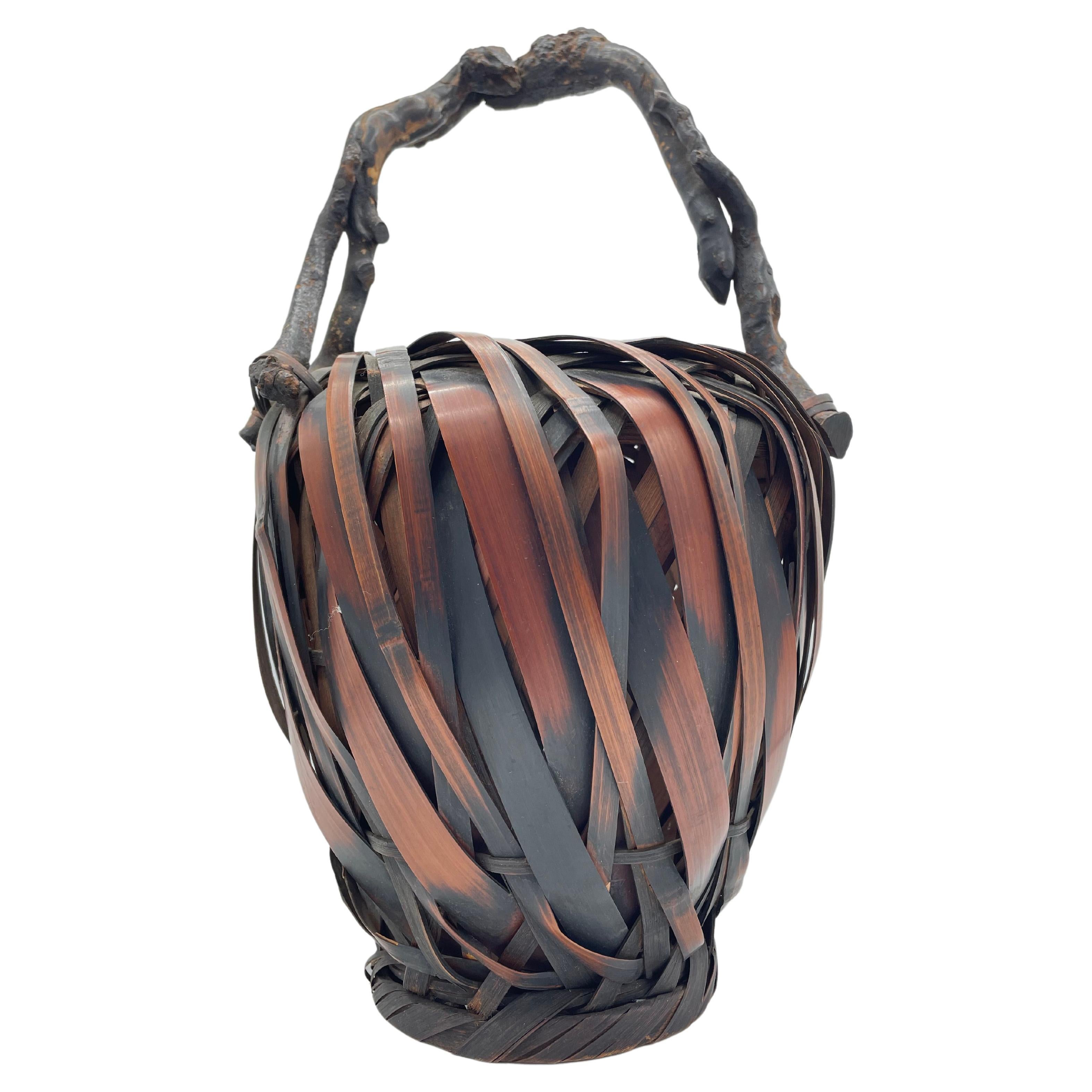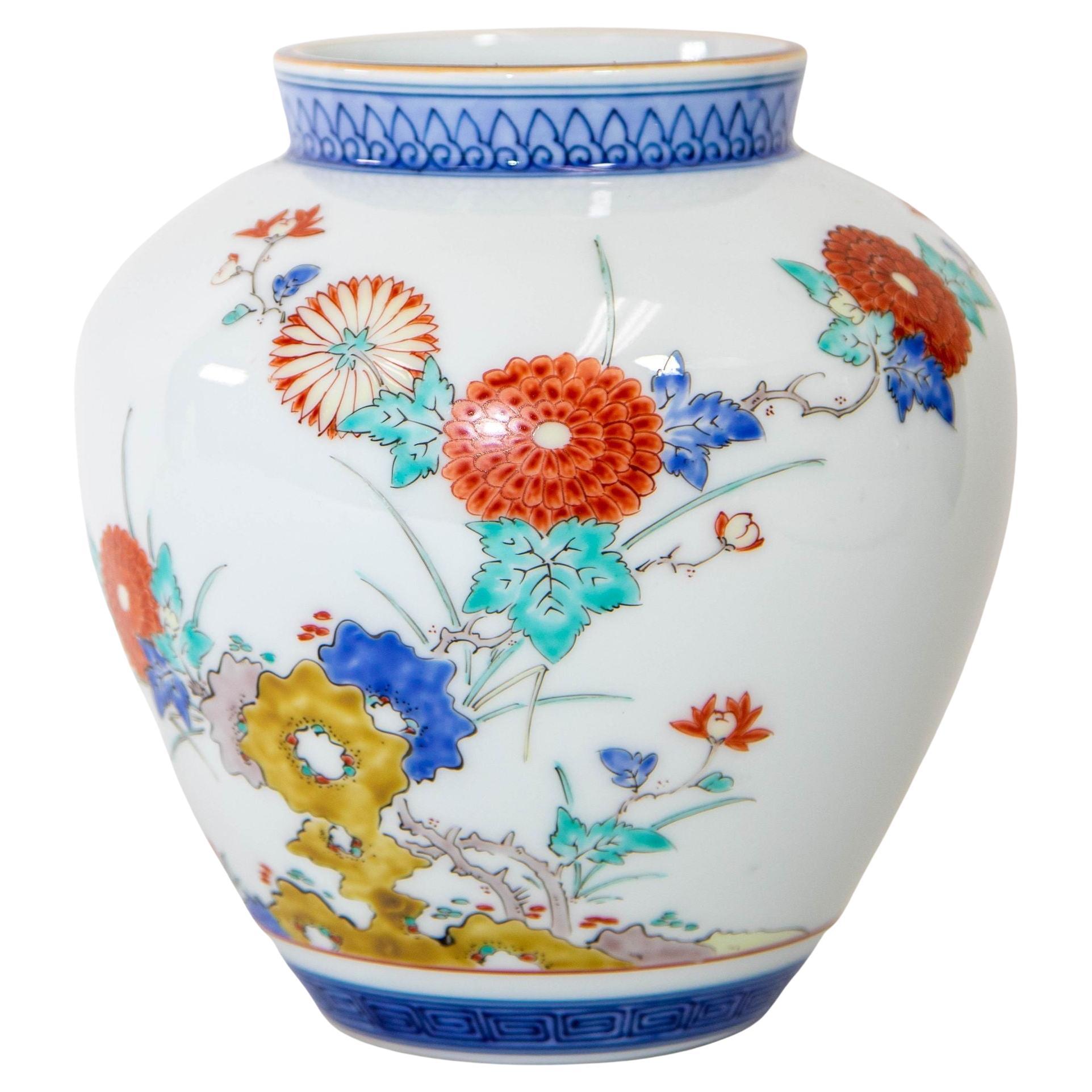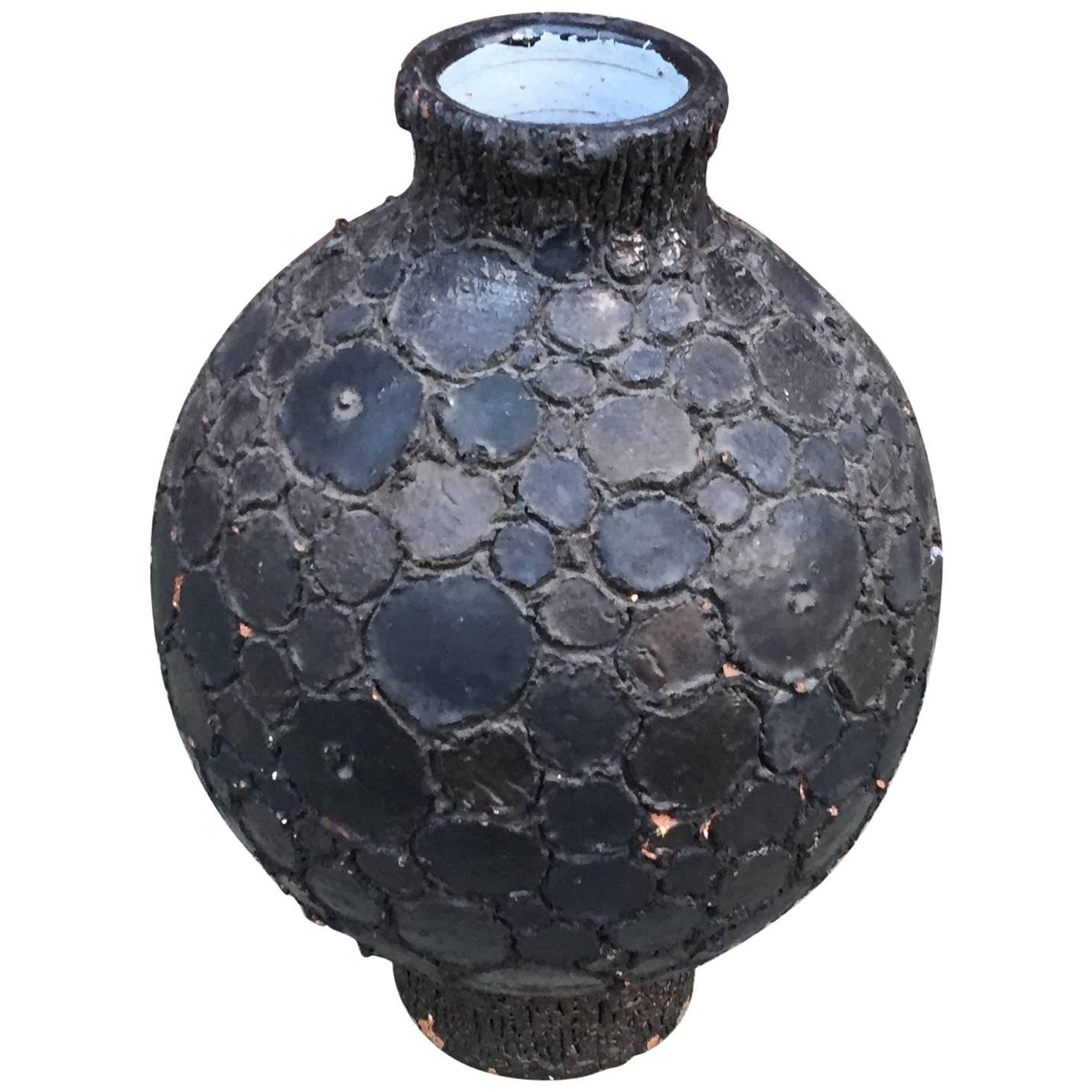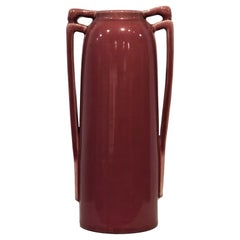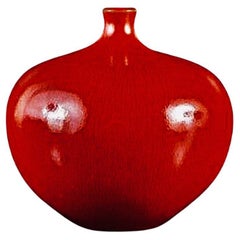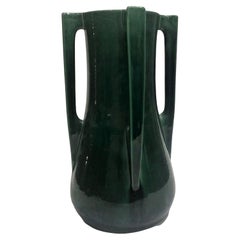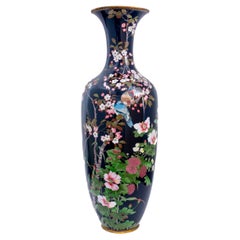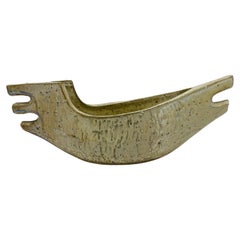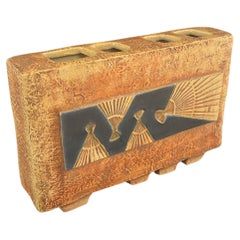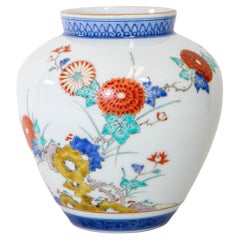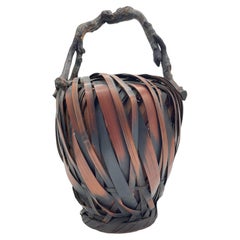Artículos similares a Japanese Modernist Beige Studio Ceramic Flower Vase, Circa 1950s
¿Quieres más imágenes o vídeos?
Solicita imágenes o vídeos adicionales al vendedor
1 de 5
Japanese Modernist Beige Studio Ceramic Flower Vase, Circa 1950s
Acerca del artículo
Japanese Modernist Beige Studio Ceramic Flower Vase, Circa 1950s
DIMENSIONS:
Height: 11 inches
Diameter: 4 inches
ABOUT JAPANESE MODERNIST BEIGE STUDIO CERAMICS
Japanese Modernist Beige Studio Ceramics represent a harmonious blend of traditional craftsmanship and modernist aesthetics, characterized by minimalist forms, subdued beige tones, and a focus on materiality and form. These ceramics emerged prominently in the post-World War II era, reflecting a shift towards individual artistic expression and a departure from purely functional pottery.
ORIGINS & INFLUENCES
The evolution of Japanese modernist ceramics was significantly influenced by two major movements:
• Mingei Movement: Initiated in the 1920s by philosopher Yanagi Sōetsu and potters like Hamada Shōji and Kawai Kanjirō, the Mingei (folk craft) movement celebrated the beauty of everyday, utilitarian objects made by anonymous craftsmen. It emphasized simplicity, natural materials, and traditional techniques, laying the groundwork for modernist interpretations in ceramics. Daniella On Design+2Financial Times+2Saint Louis Art Museum+2
• Sōdeisha Group: Founded in 1948 by Yagi Kazuo, Kano Tetsuo, and others, Sōdeisha (Crawling through Mud Association) sought to break away from traditional functional pottery. They emphasized sculptural forms and abstract expression, often incorporating muted glazes and minimalist designs. Mirviss+2Ceramics Now+2Wikipedia+2
CHARACTERISTCS OF BEIGE MODERNIST CERAMICS
Beige tones in Japanese modernist ceramics are not merely aesthetic choices but reflect deeper philosophical and cultural values:
• Wabi-Sabi Aesthetics: The preference for subdued, earthy colors aligns with the Japanese concept of wabi-sabi, which finds beauty in imperfection, impermanence, and simplicity.
• Material Emphasis: Artisans often highlight the natural texture and color of the clay, using minimal glazing to allow the material's inherent qualities to shine.
• Functional Minimalism: While some pieces are purely sculptural, many maintain functionality, embodying a minimalist design that serves both aesthetic and practical purposes.
• NOTABLE ARTISTS & STUDIOS
• Yagi Kazuo: A leading figure in the Sōdeisha group, Yagi's work exemplifies the fusion of modernist abstraction with traditional ceramic techniques. His pieces often feature neutral tones and innovative forms. Leonard Joel Auctions+3Wikipedia+3Ceramics Now+3
• Shoji Hamada: A key proponent of the Mingei movement, Hamada's ceramics are celebrated for their rustic simplicity and natural glazes, often in earthy hues including beige. Financial Times+1Daniella On Design+1
• Ken Matsuzaki: A contemporary potter influenced by both Mingei and modernist principles, Matsuzaki's works often showcase natural glazes and forms that highlight the clay's texture.
COLLECTING & APPRECIATING
Japanese modernist beige ceramics are highly regarded in both art and design circles for their timeless appeal and philosophical depth. Collectors and enthusiasts can explore these works through various avenues:
Galleries and Auctions: Institutions like Leonard Joel Auctions have featured exhibitions focusing on modernist Japanese ceramics, showcasing pieces from the 1950s to the present.
Online Marketplaces: Platforms such as 1stDibs and others offer a range of vintage and contemporary Japanese ceramics, including beige-toned pieces that reflect modernist aesthetics.
Museum Collections: Museums worldwide, including the Museum of Modern Art (MoMA), have recognized and exhibited works by Japanese modernist ceramicists, underscoring their global significance.
In summary, Japanese Modernist Beige Studio Ceramics encapsulate a unique intersection of tradition and innovation, offering insights into Japan's cultural evolution and artistic sensibilities. Their understated elegance and philosophical underpinnings continue to inspire and captivate audiences around the world.
- Dimensiones:Altura: 27,94 cm (11 in)Diámetro: 10,16 cm (4 in)
- Estilo:Japonismo (Del período)
- Materiales y técnicas:
- Lugar de origen:
- Época:
- Fecha de fabricación:Circa 1950s
- Estado:Desgaste acorde con la edad y el uso. We make our best effort to provide a fair and descriptive condition report. Please examine photos attentively, as they are part of the description. Send us a message to request more details or discuss price.
- Ubicación del vendedor:New York, NY
- Número de referencia:1stDibs: LU2819345266942
Sobre el vendedor
5,0
Vendedor profesional aprobado
Todos los vendedores superan estrictas normas de autenticidad y confiabilidad
Establecido en 1993
Vendedor de 1stDibs desde 2017
80 ventas en 1stDibs
Tiempo de respuesta usual: 4 horas
- EnvíoRecuperando presupuesto…Envío desde: New York, NY
- Política de devolución
Partes de esta página se han traducido automáticamente. 1stDibs no puede garantizar la exactitud de las traducciones. El inglés es el idioma predeterminado de este sitio web.
Garantía de autenticidad
En el improbable caso de que haya algún problema con la autenticidad de un artículo, ponte en contacto con nosotros en un plazo de 1 año para recibir un reembolso total. DetallesGarantía de devolución de dinero
Si tu artículo no es como se describe, sufre daños durante el transporte o no llega, ponte en contacto con nosotros en un plazo de 7 días para recibir un reembolso total. DetallesCancelación dentro de las 24 horas
Tienes un período de gracia de 24 horas para reconsiderar tu compra, sin preguntas.Vendedores profesionales aprobados
Nuestros vendedores de primera clase deben cumplir estrictos estándares de servicio para mantener la integridad de nuestros anuncios.Garantía de igualación de precios
Si encuentras que un vendedor publicó el mismo artículo por un precio menor en otro lado, igualaremos ese precio.Entrega global de confianza
Nuestra red de transporte de primera ofrece opciones de envío especializado en todo el mundo, que incluye envío personalizado.Más de este vendedor
Ver todoFlorero de cerámica japonesa Art Nouveau Awaji Ware Art Studio Pottery, ca. 1900
Art Nouveau japonés
Florero
Alfarería Awaji Art Studio Pottery
ca. 1900s
SOBRE AWAJI WARE ART STUDIO POTTERY
La Awaji Pottery se fabricó en la isla japonesa del mismo nombre entre...
Categoría
Antiguo, Principios del 1900, Japonés, Art Nouveau, Jarrones
Materiales
Alfarería
Periodo Shōwa del Emperador Japonés, Jarrón rojo de cerámica fina, Firmado, Ca. 1980
Periodo Shōwa del Emperador Japonés, Jarrón rojo de cerámica fina, Firmado, Ca. 1980
Periodo del Emperador Shōwa - de 1926 a 1990
ACERCA DE
Con la clásica forma japonesa, este exq...
Categoría
Vintage, Década de 1980, Japonés, Japonismo, Jarrones
Materiales
Cerámico
Art Nouveau japonés, jarrón con flores de Awaji Ware Art Studio Pottery, Ca. 1900
Por Awaji Pottery
DIMENSIONES:
Altura: 12,5 pulgadas
Anchura: 6,75 pulgadas
Profundidad: 6,75 pulgadas
ACERCA DE AWAJI POTTERY
La Awaji Pottery se fabricó en la isla japonesa del mismo nombr...
Categoría
Antiguo, Principios del 1900, Japonés, Art Nouveau, Jarrones
Materiales
Cerámico
Gran jarrón japonés de cloisonné, Ca. 1900/1910
Gran jarrón japonés de cloisonné azul noche con flores y pájaros, ca. 1900/1910
Periodo Meiji tardío (1868-1912)-Periodo Taisho temprano (1912-1926)
Dimensiones: 46" de alto x 51,5" ...
Categoría
Antiguo, Principios del 1900, Japonés, Japonismo, Jarrones
Materiales
Metal
Jarrón Ikebana de Madera de Raíz Japonesa y Bambú, Siglo XIX
Atique
Madera de raíz y bambú
Jarrón Ikebana
Japón, Siglo XIX
DIMENSIONES
Altura: 19,25 pulgadas
Anchura: 10,13 pulgadas
Profundidad: 9,5 pulgadas
ACERCA DE
Este jarrón ikebana abs...
Categoría
Antiguo, Fines del siglo XIX, Japonés, Japonismo, Jardineras, maceteros ...
Materiales
Bambú, Madera
Jarrón de loza Kiyomizu del Periodo Shōwa del Emperador Japonés, Siglo XVIII
Jarrón de loza Kiyomizu del Periodo Shōwa del Emperador Japonés, Siglo XVIII
Periodo del Emperador Shōwa - de 1926 a 1989/1990
DIMENSIONES
Alt...
Categoría
Antiguo, Década de 1770, Japonés, Japonismo, Jarrones
Materiales
Cerámico
También te puede gustar
Jarrón Ikebana Modernista de Mediados de Siglo, Japón Años 50
Jarrón Ikebana modernista con estructura de vaso y superficie texturizada. Firma desconocida en la parte inferior. Japón, años 50.
Mediados de siglo, Hollywood Regency, Art Decó, E...
Categoría
Vintage, Década de 1950, Japonés, Moderno de mediados de siglo, Jarrones
Materiales
Arcilla
Jarrón Ikebana Modernista de Mediados de Siglo, Japón Años 50
Jarrón Ikebana modernista con múltiples aberturas y una superficie texturizada. bonitos colores firmado en el lateral.
Categoría
Vintage, Década de 1950, Japonés, Moderno de mediados de siglo, Jarrones
Materiales
Arcilla
Jarrón Japonés Arita Kakiemon Firmado con Diseño de Flores Años 50
Por Sakaida Kakiemon Xii, Arita
Jarrón japonés Kakiemon Arita Imari de mediados de siglo firmado con flores.Jarrón japonés Kakiemon firmado por Sakaida Kakiemon XIII (1906-1982). Precioso ejemplo de jarrón estilo j...
Categoría
mediados del siglo XX, Japonés, Japonismo, Jarrones
Materiales
Porcelana
Florero antiguo japonés de bambú, años 50
Se trata de un florero antiguo hecho con bambú y madera en Japón.
Este jarrón de flores se fabricó hacia la década de 1950.
La parte de la muñeca está hecha con madera y el jarrón ...
Categoría
Vintage, Década de 1950, Japonés, Jarrones
Materiales
Bambú, Madera
Perignem , jarrón de cerámica de inspiración japonesa, sin firmar, hacia 1950
Perignem, jarrón de cerámica de inspiración japonesa, sin firmar, hacia 1950
Categoría
Vintage, Década de 1950, Belga, Japonismo, Jarrones
Materiales
Cerámico
Jarrón de cerámica, Italia, hacia 1950
Por Giovanni de Simone
Precioso jarrón de cerámica pintado a mano de mediados de siglo.
Italia, hacia la década de 1950.
Categoría
Vintage, Década de 1950, Italiano, Moderno de mediados de siglo, Cerámica
Materiales
Cerámico
160 US$ Precio de venta
Descuento del 20 %
